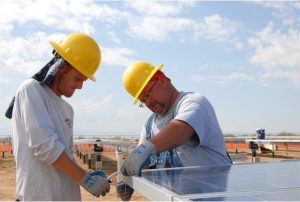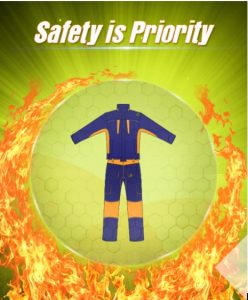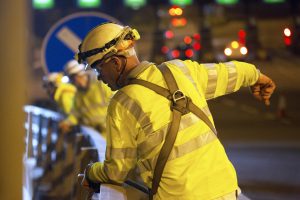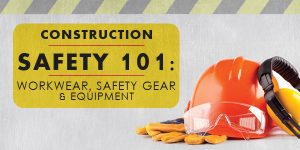Safety in the Lab – Essential Equipment You Need
Any laboratory that practises good safety will take care to ensure it has the right equipment on hand at all times.
No matter the industry – pharmaceuticals, cosmetics, industrial engineering or food production – the same safety precautions must be taken to create a safe, productive and enjoyable working environment for all.
Below are some of the main safety clothing and equipment that should be found in most laboratories. Though the needs and requirements of labs will vary, many of these will lend themselves to a variety of processes and uses.
The equipment can be roughly categorised into three groups:
– General PPE (used daily)
– General purpose equipment
– Specialised equipment, if required.
General PPE
- Safety shoes/boots Safety shoes or boots are used for a number of reasons in the lab.
First, they improve grip performance on the lab floor, helping to avoid slips and trips.
Second, they protect the feet against falling heavy or sharp objects, which would otherwise puncture normal shoes.
Safety boots incorporate protective toe caps as well as other protective features such as slip-resistant soles and insulation against extremes. Safety shoes, meanwhile, incorporate protective toe caps like boots but are available metal-free as “composite footwear”. This makes them much more lightweight.
There are many different types of safety shoes on the market, which can make choosing the right ones overwhelming. However, all in all, safety shoes must:
– Meet the legal requirements
– Be the correct type for the task or worker
– Be sued or worn correctly by all staff required.
Safety shoes ideally need to be slip-resistant, avoid static build-up and suit the main contaminants and surfaces in your workplace.
- Safety Glasses/Goggles
Safety glasses and goggles protect against foreign objects that may splash into the eye, as well as cuts and scrapes to the cornea.
Some of the most common workplace injuries happen to the eyes, 90% of which could be easily avoided by the correct safety eyewear being worn.
The most common types of eye injury include splashes from grease and oil; burns from steam; ultraviolet or infrared radiation exposure, and flying wood or metal chips.
Also, some lab staff may be at risk of acquiring infectious diseases from eye exposure.
Types of safety eyewear include:
– Safety glasses with side shields (worn in areas with flying particles and dust)
– Goggles (work when working with chemicals)
– Special-purpose safety glasses, goggles, face shields or helmets (for working near hazardous radiation).
Eyewear should be selected based on the hazards of each activity. Prescription safety glasses are also available for those that usually wear spectacles, with safety glasses having much stronger lenses and frames than regular glasses.
The most common materials for safety glasses are plastic, polycarbonate and Trivex, with polycarbonate offering the most protection.
- Safety Gloves
As with other PPE, safety gloves need to be suited to the hazards workers will be working with. They will usually be made of nitrile or latex, depending on allergies, but different gloves are more suited to different types of chemicals.
Glove selection can be determined by:
– Temperature extremes and cryogenic properties
– Physical hazards (piercing objects)
– pH
– Toxicity
– Infectious potential of biological hazards.
It’s also necessary to consider whether contact with the chemical will be incidental or extended.
If the contact will be incidental (short-lived), disposable gloves are usually fine. Nitrile gloves are generally preferred over latex due to their chemical resistance and easy visibility when ripped.
If contact will be extended, norfoil gloves are recommended for highly toxic or easily absorbed through skin. These are usually reusable, but must be washed, left to air-dry and checked for punctures and tips after each use.
- Lab Coat
A lab coat should fit properly and chosen according to the type of hazard and chemicals. There are various styles available, including women’s fit and varying sleeve lengths, so it’s always possible to find the fit you need.
Lab coats should be worn in the work area at all times buttoned or snapped, with the sleeves rolled down. They should be removed whenever one exits the work area, for example, when leaving work or going to the restroom.
If contaminated by spills or splashes, the lab coat should be removed immediately and disposed of as hazardous waste. They come in a range of materials – from flame-resistant Nomex and cotton, to traditional materials like polycotton blends and polyester (a good barrier).
General Purpose Equipment
5. Fume Extraction
Fume extraction can be acquired in the form of either a cabinet or localised fume hood.
When choosing between the two, a hazard analysis will need to be done first of all to see what contaminants need to be removed, as well as air monitoring, which will determine what chemicals workers are exposed to.
The pertinent data obtained will determine what type of fume extraction system you need.
Ducted hood extraction systems are ventilated enclosures, where the ducting connects to the outside so contaminants are pulled out of the building. They are safe and easy to maintain and usually made up of a base, work surface, hood, blower and ducting.
Biosafety cabinets are another form of fume extraction that use HEPA filtration. They are categorised by three classes:
- Class I – air is drawn away from the lab worker and across the work surface
- Class II – air is drawn safely around operator, whilst sterile air flows downwards onto the work surface and exhaust air is HEPA filtered before either being recirculated into the lab or released into the atmosphere through ductwork or a canopy.
- Class III – a gas-tight enclosure, with both intake of air and exhaust air passing through HEPA filtration.
Biosafety cabinets provide a safe environment for the research and examination of infectious microorganisms or other hazardous particulates.
Specialised Equipment
Full Face Respirators
These are highly recommended for all clandestine lab decontamination jobs, as eyes and nostrils can be an entry point for hazardous chemicals.
It is important to choose the right type of respirator. In secondary areas (where contamination has spread but no actual cooking took place), it may be acceptable to wear a half-face respirator with protective glasses.
Consider also the type of filter to be used with the respirator. Some only work in certain situations; for example, clan lab remediation jobs require the use of an ammonia filter.
- Tyvek Suits
When it comes to protective suits, Tyvek make an excellent choice. As the trusted leader for a variety of products, Tyvek suits offers high protection along with comfort, being made from versatile materials which are tough yet lightweight.
Tyvek’s creator DuPoint are widely known for their extensive testing against things like inward leakage, penetration and permeation. The suits are an excellent barrier against liquids and aerosols, are anti statically treated, and are “low linting” thanks to the non-woven fabric.
Because Tyvek suits aren’t made from films or laminates that can wear off over time, they are extremely long-lasting and abrasion-resistant.
Tyvek suits can provide protection against chemicals, oils, liquids, dust particles and fibres and airborne elements. They can be used for a variety of scenarios, including chemical safety, pharmaceuticals, biological hazard protection and chemical protection.
Different suits are tailored to different hazards, so as with anything else, always determine the type of hazard and select the correct suit accordingly.
- Dust Mask
Processes such as grinding, sieving sediment or plant materials or polishing can generate fine dust particles in the air.
Dust masks protect against these particles, which can be potentially harmful, and cause allergic reactions and asthma, if these processes cannot be carried out in a fume cupboard.
Dust masks can also be worn when handling or transferring powders in bulk.
- Chemical Absorbant granules
Chemical spill cleanup is something that must always be planned for in any lab, with the right tools on hand to control and manage spills when they occur.
Different industries require different types of spill cleanup processes, but chemical absorbent granules serve many different purposes and carry many advantages over other spill cleanup substances, with a simplistic and flexible application to small spills.
There are a few different types od chemical absorbent granules on the market. These are:
- Multi-zorb – an industrial spillage absorbant quality granule clay. Multi-zorb absorbs spillages without granular breakdown, and is clean, dry and safe.
- New Safety thread – this is non-marking, non-dusting, and suitable for strong chemicals.
- Light Plus – paper pellet granules.
- E-Sorb – fire retardant wood fibre granules.
- ELCEF fibre – biodegradable oil selective fibre.
- Saline Eye wash
The first 10-15 seconds after a hazardous chemical coming into contact with the eye can often be the most critical. If immediate flushing is carried out, this greatly minimises the likelihood of any serious damage being done.
Emergency eyewash stations provide on-the-spot decontamination, helping workers flush away hazardous substances that can cause injury to the eye. They are an essential addition to the lab as they provide a necessary backup in the case of exposure to chemicals.
Saline is a very popular “flushing fluid” that is medically approved, and often used as a solution for eye washes.
The worker should use the eye wash station to flush the eyes for a minimum of 15 minutes, or 20 minutes if substance is not known.
The total flushing time may vary for different types of chemicals. For example, non-irritable substances may be flushed for only five minutes, whilst corrosives will need 30 and strong alkalis will need to be flushed for 60 minutes.
Whilst flushing, the user must keep eyes open and rotate numerous times in all directions to thoroughly remove the contamination.
About ReAgent
ReAgent has been producing chemicals for the food and construction industries for the last 40 years. As well as the supply of raw chemicals and materials, they also specialise in the production of chemical solutions, mixing, blending, filling and packing.
ReAgent is particularly proud of its high quality policies and transparent working relationship with its customers.
They are currently ISO accredited in both the 9001 Quality Standard and 14001 Environmental Standard, and are proactively working towards accreditation in ISO 45001 Occupational Health & Safety Standard.



